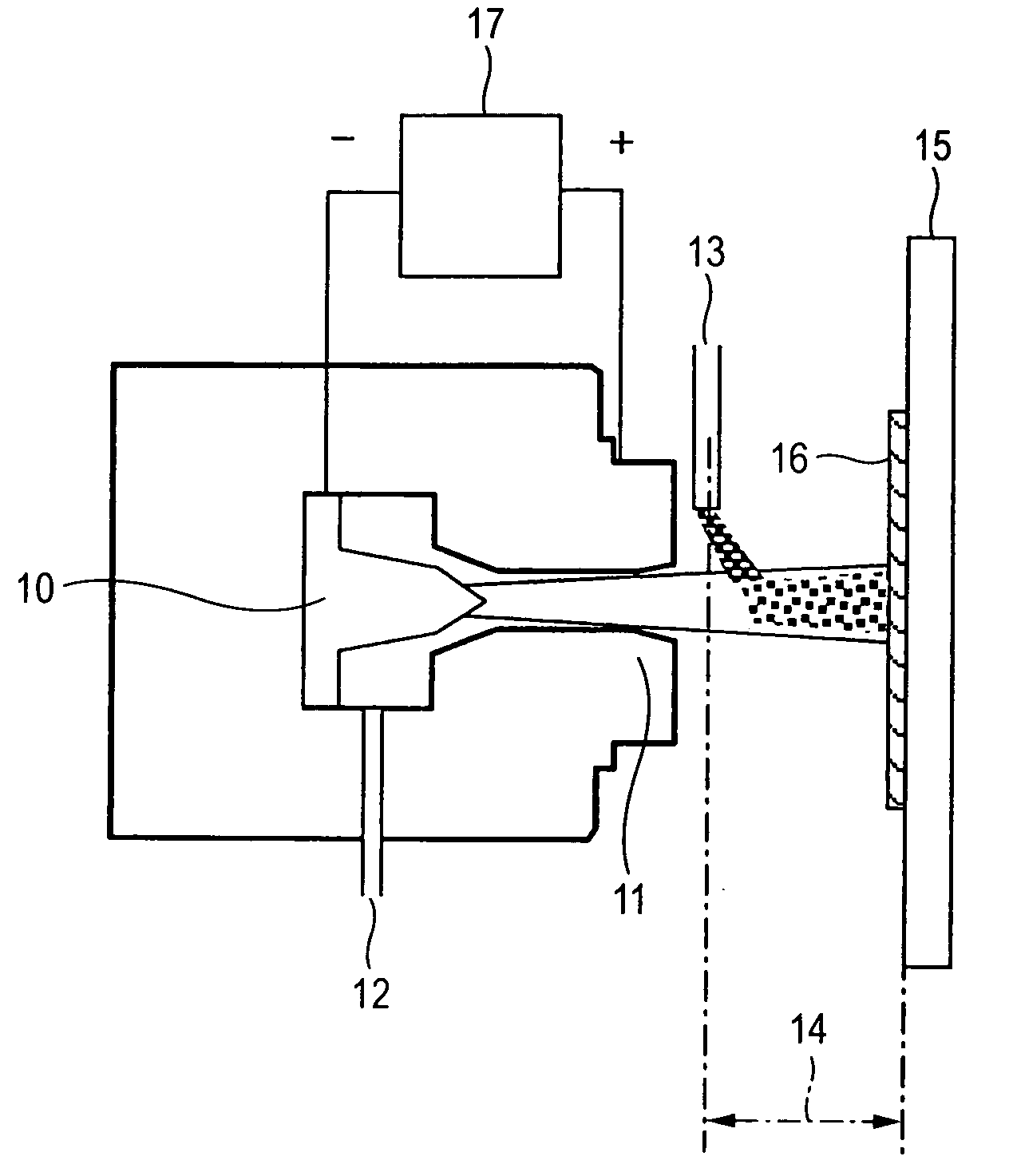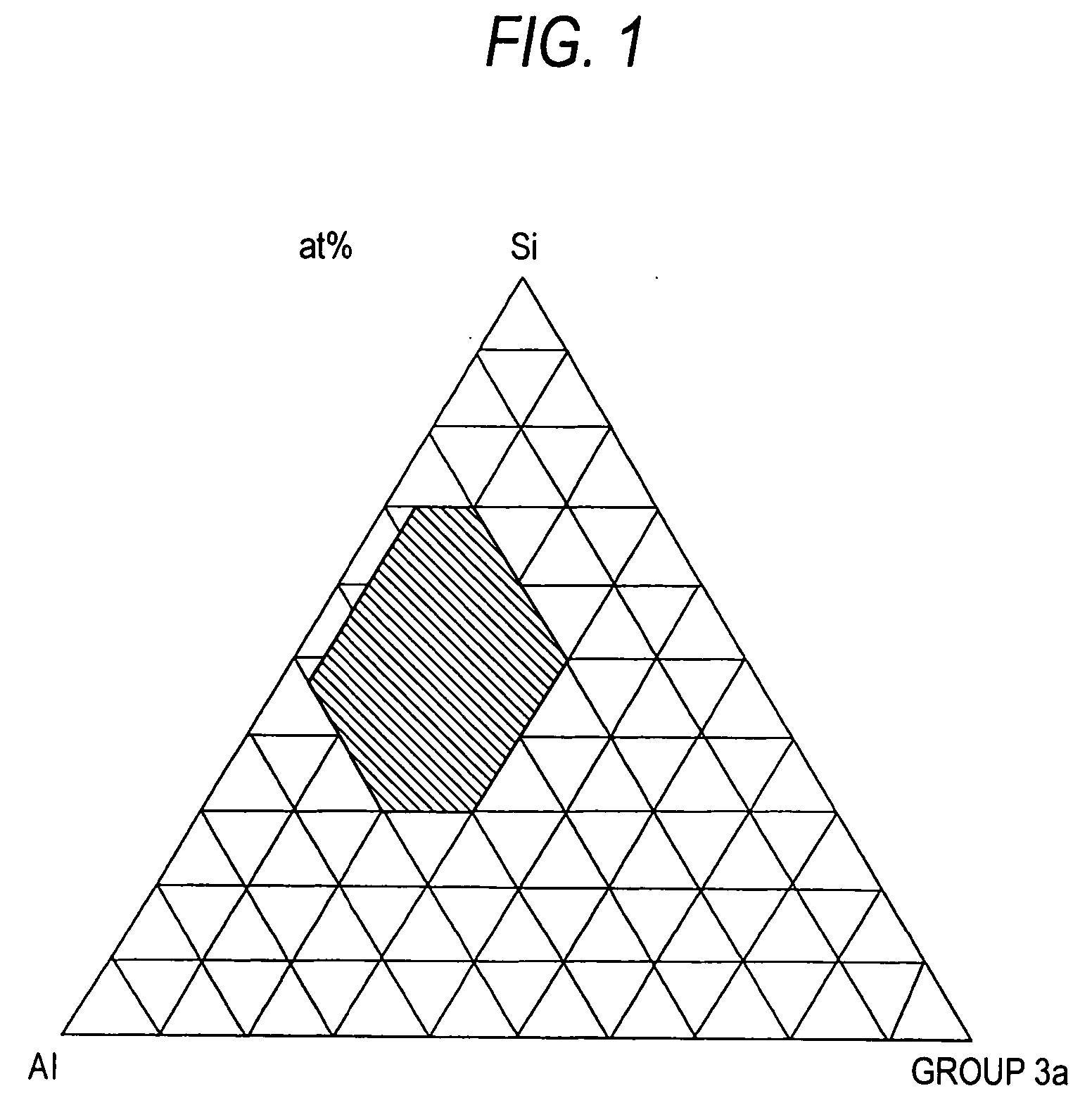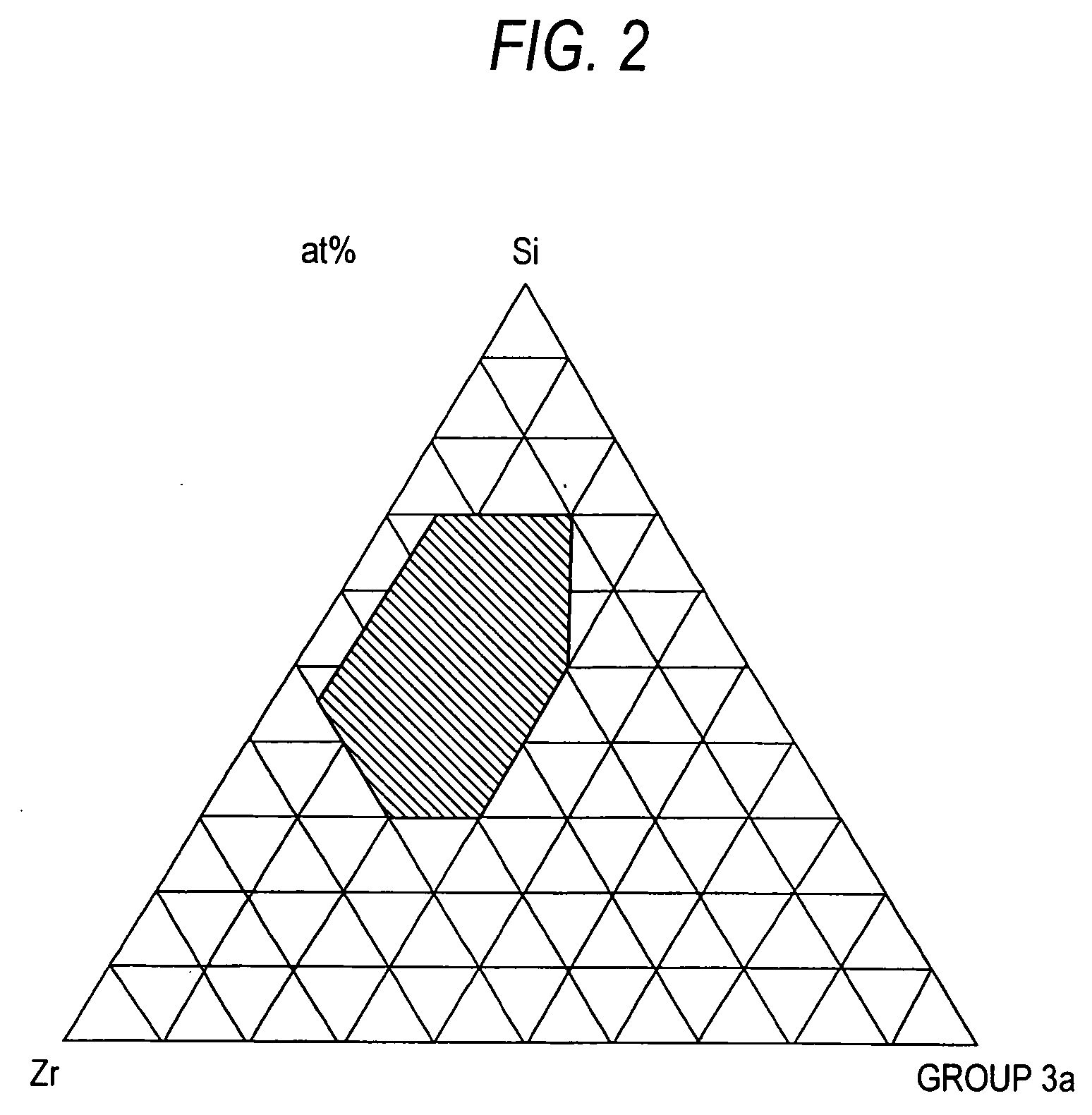Corrosion-resistant member and method forproducing same
- Summary
- Abstract
- Description
- Claims
- Application Information
AI Technical Summary
Benefits of technology
Problems solved by technology
Method used
Image
Examples
example 1
1) Preparation of Base Material:
[0079] On a quartz glass base material, nitrogen was flown as a plasma gas at a rate of 5 SLM to form plasma with a power of 21 kW using a double torch type plasma spraying device as shown in FIG. 5, and a spraying gun was moved at a rate of 80 mm / min while adjusting a spraying distance at 80 mm without supplying a raw material powder, thereby pre-heating the quartz glass base material. At this time, the plasma was in the laminar state with a length of about 30 cm. Next, a quartz powder was supplied at a rate of 4.5 g / min and sprayed while moving the spraying gun at a rate of 160 mm / sec. The subject sprayed surface was exposed with plasma without supplying a raw material powder while moving the spraying gun at a rate of 300 mm / min, thereby melting a powdered substance adhered onto the surface. There was thus prepared a quartz glass base material coated with a quartz sprayed coating having a surface roughness Ra of 15 μm (base material A).
[0080] Fur...
example 2
1) Formation and Evaluation of Corrosion Resistant Sprayed Coating:
[0086] Using a spraying powder prepared from an oxide of each of metal elements shown in Table 2 in the same manner as in Example 1-2) for the base material D prepared in Example 1-1), nitrogen was flown as a plasma gas at a rate of 16 SLM to form plasma with a power of 32 kW using a double torch type plasma spraying device as shown in FIG. 5, and the plasma was sprayed 25 times at a spraying distance of 100 mm and a flow rate of the raw material powder of 7 g / min while moving a spraying gun at a rate of 400 mm / sec and at a pitch of 3 mm, to form a corrosion resistant sprayed coating. At this time, the plasma flame was in the turbulent state. For the sprayed coating, the coating quality was confirmed as the performance evaluation by observing a cross section of the sprayed coating by SEM; and dense one was designated as “0”, and porous one was designated as “x”. Also, the vitrification was confirmed by the X-ray di...
PUM
| Property | Measurement | Unit |
|---|---|---|
| Surface roughness | aaaaa | aaaaa |
| Surface roughness | aaaaa | aaaaa |
| Concentration | aaaaa | aaaaa |
Abstract
Description
Claims
Application Information
 Login to View More
Login to View More - R&D
- Intellectual Property
- Life Sciences
- Materials
- Tech Scout
- Unparalleled Data Quality
- Higher Quality Content
- 60% Fewer Hallucinations
Browse by: Latest US Patents, China's latest patents, Technical Efficacy Thesaurus, Application Domain, Technology Topic, Popular Technical Reports.
© 2025 PatSnap. All rights reserved.Legal|Privacy policy|Modern Slavery Act Transparency Statement|Sitemap|About US| Contact US: help@patsnap.com



